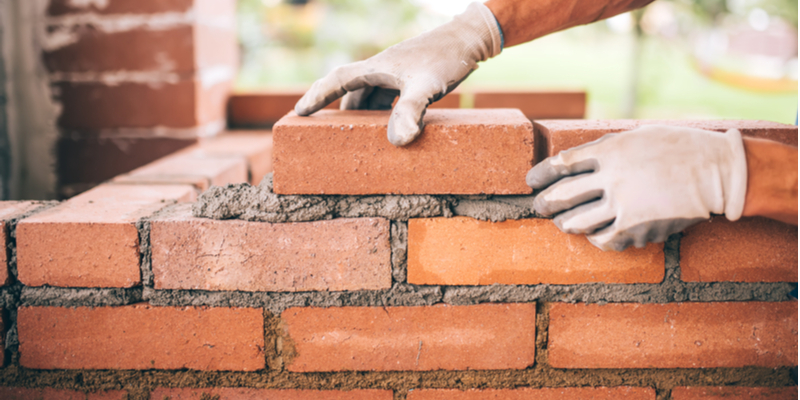When building a wall there are many different factors that you need to keep in mind, including how tall a single brick wall may be safely built. In short, you can build a brick wall at a consistent rate of 5 feet a day without problems. Once you get up to around 7 feet, you will need extra support systems and a solid foundation to ensure that the brick wall is safe and sturdy. Building a brick wall is not a task to take lightly. Otherwise, you could potentially risk the integrity of the entire project.
7 Factors to Consider When Determining How High a Brick Wall Can Be Built
As a general rule of thumb, expect to build a single brick wall up to 7 feet before putting in extra support systems. Of course, there are other factors to take into consideration. We are about to break down all of the factors you need to know to determine how high a brick wall can be built.
#1. Manufacturer Recommendations
The first thing that you need to consider is if any recommendations come from the manufacturer. Usually, a manufacturer will list the minimum and maximum height for their bricks. However, it is important to note that other factors can impact this number. We will continue to discuss some of these below.
#2. The Climate of the Building Location
When you are creating a brick building, you need to keep the climate that you live in mind. Although high temperatures will generally not ruin the building by any means, colder temperatures can cause moisture in the mortar to freeze and expand. This needs to be considered when determining how high you will build the structure. For best results, wait for a warmer day.
#3. Total Amount of Supplies/Labor
You will not be able to build a brick wall as high as your aspirations anticipate without enough supplies and the proper skilled labor. You will need things like scaffolding for higher projects. Not to mention, lots of extra mortar and craftsmen to help lay the bricks down.
#4. The Type of Brick Material Used
If you are going to use a basic type of brick such as sun-dried bricks, you shouldn’t expect to build a high wall. Therefore, be sure to get high-grade engineering bricks, as an example, if you want your brick walls to stack up nice and tall, while remaining safe and sturdy. Although still important, the aesthetic quality and color of the bricks is really a second priority after you value the best stackability possible.
#5. Mortar Quality & Type
The mortar you use will help you gauge whether or not your brick wall will be able to stack up to high heights. Be sure to buy high-quality mortar such as Type N or M mortar if you want to have the best shot at a high quality and tall brick wall.
#6. The Foundation of Your Building
Installing a brick wall on something unstable and fragile like sand is never a good idea. Especially if you want your brick wall to be higher than average. Make sure that you begin construction on a sturdy surface such as bedrock. This will help ensure that you will be able to build a tall brick wall that doesn’t come crashing down.
#7. Extra Support in the Construction
As we briefly stated, you will inevitably need extra support systems in place once a brick all reaches seven feet and taller. The good news is that there are multiple ways to make a brick wall sturdier. Perhaps the easiest way is to simply add more layers to your wall and make it thicker. Then, you can add separate support structures as needed.
Turnbull Masonry excels at building brick walls of all shapes and sizes in Toronto – contact us today to learn more.

